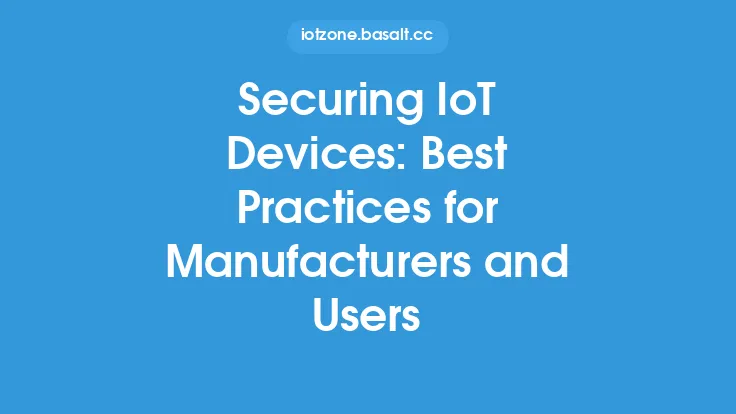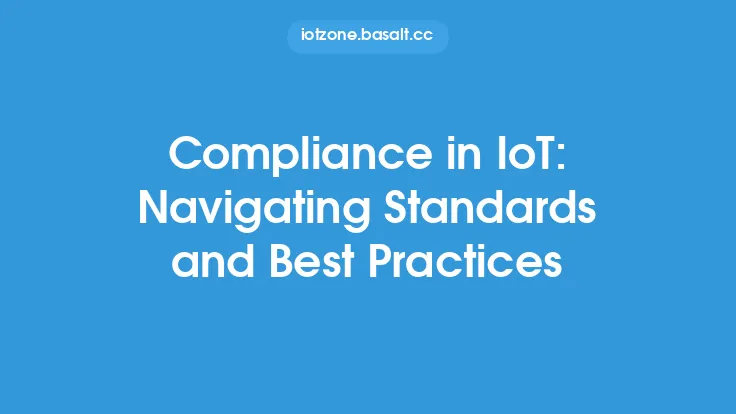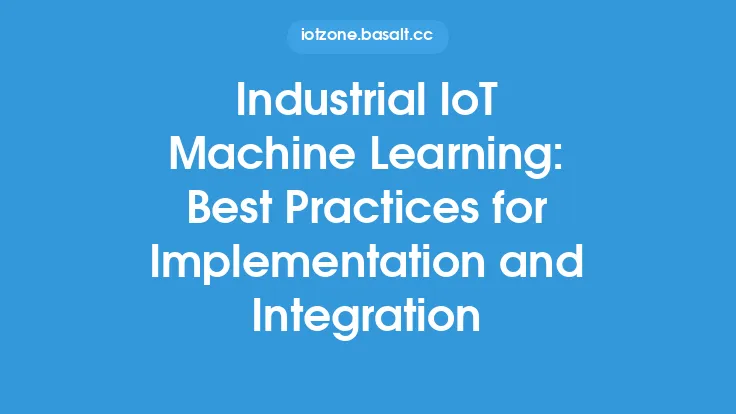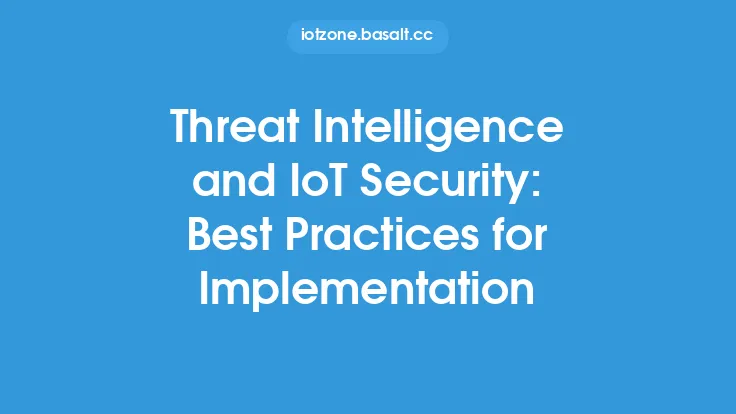The Internet of Things (IoT) has revolutionized the way we live and work, with an ever-increasing number of devices connected to the internet. However, this increased connectivity also brings with it a host of security risks. Securing IoT networks is crucial to prevent unauthorized access, data breaches, and other malicious activities. In this article, we will discuss the best practices and recommendations for securing IoT networks, focusing on the technical aspects and evergreen information that remains relevant over time.
Introduction to IoT Network Security
IoT network security refers to the practices and technologies used to protect IoT devices and networks from cyber threats. IoT devices, such as smart home appliances, industrial sensors, and wearable devices, are often resource-constrained, making them vulnerable to attacks. Moreover, the sheer number of IoT devices connected to the internet makes it challenging to secure them all. A robust IoT network security strategy is essential to prevent attacks, detect anomalies, and respond to incidents.
Secure Communication Protocols
Secure communication protocols are a critical component of IoT network security. These protocols ensure that data transmitted between IoT devices and the cloud or other devices is encrypted and authenticated. Some of the commonly used secure communication protocols in IoT include:
- Transport Layer Security (TLS) and Secure Sockets Layer (SSL): These protocols provide end-to-end encryption for data in transit.
- Datagram Transport Layer Security (DTLS): This protocol provides encryption for data in transit over UDP.
- IPsec: This protocol provides encryption and authentication for IP packets.
- CoAP: This protocol provides a secure and efficient way to communicate with constrained devices.
Device Authentication and Authorization
Device authentication and authorization are essential to ensure that only authorized devices can access the IoT network. There are several device authentication mechanisms, including:
- Pre-shared keys (PSK): This mechanism uses a shared secret key to authenticate devices.
- Public key infrastructure (PKI): This mechanism uses digital certificates to authenticate devices.
- Token-based authentication: This mechanism uses tokens, such as JSON Web Tokens (JWT), to authenticate devices.
- Biometric authentication: This mechanism uses biometric data, such as fingerprints or facial recognition, to authenticate devices.
Network Segmentation
Network segmentation is a technique used to divide the IoT network into smaller, isolated segments. This helps to prevent lateral movement in case of a breach and reduces the attack surface. Network segmentation can be achieved using:
- Virtual local area networks (VLANs): These are logical segments of a network that are isolated from each other.
- Subnets: These are sub-networks that are isolated from each other.
- Access control lists (ACLs): These are used to control traffic flow between network segments.
Firmware and Software Updates
Firmware and software updates are essential to ensure that IoT devices have the latest security patches and features. There are several ways to update firmware and software, including:
- Over-the-air (OTA) updates: These updates are delivered wirelessly to IoT devices.
- Firmware-over-the-air (FOTA) updates: These updates are delivered wirelessly to IoT devices and update the firmware.
- Secure boot: This mechanism ensures that only authorized firmware can be loaded onto an IoT device.
Incident Response and Management
Incident response and management are critical components of IoT network security. In case of a security incident, it is essential to have a plan in place to respond quickly and effectively. This includes:
- Incident detection: This involves monitoring the IoT network for signs of a security incident.
- Incident response: This involves responding to a security incident and containing the damage.
- Incident management: This involves managing the incident response process and ensuring that the incident is fully resolved.
Security Information and Event Management (SIEM) Systems
Security information and event management (SIEM) systems are used to monitor and analyze security-related data from IoT devices and networks. SIEM systems provide real-time monitoring and alerts, helping to detect and respond to security incidents quickly. Some of the key features of SIEM systems include:
- Log collection and analysis: This involves collecting and analyzing log data from IoT devices and networks.
- Anomaly detection: This involves detecting unusual patterns of behavior that may indicate a security incident.
- Alerting and notification: This involves sending alerts and notifications to security teams in case of a security incident.
Conclusion
Securing IoT networks requires a multi-faceted approach that includes secure communication protocols, device authentication and authorization, network segmentation, firmware and software updates, incident response and management, and security information and event management (SIEM) systems. By following these best practices and recommendations, organizations can help protect their IoT networks from cyber threats and ensure the confidentiality, integrity, and availability of their data. As the IoT continues to evolve and grow, it is essential to stay informed about the latest security threats and technologies to ensure the security and integrity of IoT networks.





